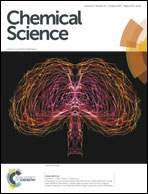Chemical selectivity of nucleobase adduction relative to in vivo mutation sites on exon 7 fragment of p53 tumor suppressor gene†
Abstract
Damage to p53 tumor suppressor gene is found in half of all human cancers. Databases integrating studies of large numbers of tumors and cancer cell cultures show that mutation sites of specific p53 codons are correlated with specific types of cancers. If the most frequently damaged p53 codons in vivo correlate with the most frequent chemical damage sites in vitro, predictions of organ-specific cancer risks might result. Herein, we describe LC-MS/MS methodology to reveal codons with metabolite-adducted nucleobases by LC-MS/MS for oligonucleotides longer than 20 base pairs. Specifically, we used a known carcinogen, benzo[a]pyrene-7,8-dihydrodiol-9,10-epoxide (BPDE) to determine the most frequently adducted nucleobases within codons. We used a known sequence of 32 base pairs (bp) representing part of p53 exon 7 with 5 possible reactive hot spots. This is the first nucleobase reactivity study of a double stranded DNA p53 fragment featuring more than 20 base pairs with multiple reactive sites. We reacted the 32 bp fragment with benzo[a]pyrene metabolite BPDE that undergoes nucleophilic substitution by DNA bases. Liquid chromatography-mass spectrometry (LC-MS/MS) was used for sequencing of oligonucleotide products from the reacted 32 bp fragment after fragmentation by a restriction endonuclease. Analysis of the adducted p53 fragment compared with unreacted fragment revealed guanines of codons 248 and 244 as most frequently targeted, which are also mutated with high frequency in human tumors. Codon 248 is mutated in non-small cell and small cell lung, head and neck, colorectal and skin cancer, while codon 244 is mutated in small cell lung cancer, all of which involve possible BDPE exposure. Results suggest the utility of this approach for screening of adducted p53 gene by drugs and environmental chemicals to predict risks for organ specific cancers.


 Please wait while we load your content...
Please wait while we load your content...